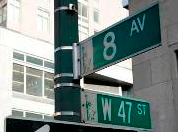 When compared to the cost of buying an apartment in Manhattan, rental prices in the borough aren’t actually that bad. A study released on Friday by the Federal Reserve Bank of New York says that apartment prices in New York City have risen considerably faster than rents have in recent years. This split has raised some serious questions about the outlook for housing prices in the city as well as the sustainability of current prices. “Manhattan price-rent ratios, although off their 2008 highs, are still up dramatically over the past two decades, suggesting less financial ‘value’ today in an apartment purchase there,” said New York Fed economist Jason Bram, writing in the bank’s Current Issues in Economics and Finance.
When compared to the cost of buying an apartment in Manhattan, rental prices in the borough aren’t actually that bad. A study released on Friday by the Federal Reserve Bank of New York says that apartment prices in New York City have risen considerably faster than rents have in recent years. This split has raised some serious questions about the outlook for housing prices in the city as well as the sustainability of current prices. “Manhattan price-rent ratios, although off their 2008 highs, are still up dramatically over the past two decades, suggesting less financial ‘value’ today in an apartment purchase there,” said New York Fed economist Jason Bram, writing in the bank’s Current Issues in Economics and Finance.
The economist also said that apartment sales are driven, in part, by “speculative factors” that make the sales market move differently to the rental market, where things are driven much more by the classic supply-and-demand dynamics. Despite this, Mr. Bram observed that current price-rent ratios are more than twice as high as they were in the mid-1990s. For current Manhattan prices to make sense relative to rental costs, mortgage rates, and property taxes, prices would need to appreciate by at least 4 percent a year. If other costs are included this appreciation may need to be even higher.
The paper’s findings are based on a comparison of rental and ownership prices for Manhattan 1 bedroom apartments between 1989 and 2011. Mr. Bram noted that some very recent data suggests that apartment prices have stabilized while gains from rental prices have accelerated. The study itself is aided by the relative homogeneity in New York City’s real estate market. While in most cities there is a large disparity between what people buy and what people rent, New York City, and especially Manhattan, has “a large luxury rental market and renters and owners often live side by side.” This simplifies the question of the true cost of renting versus buying, Mr. Bram said. New York City’s space constraints and business environment helped it to largely sidestep the housing bubble that affected so many other cities.





